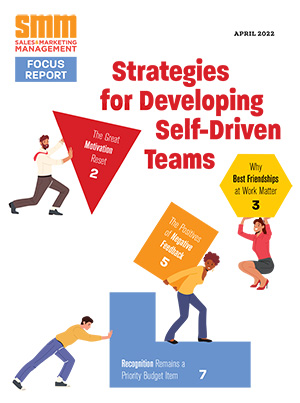Strategy is stuck, says Rita Gunther McGrath, a professor at Columbia Business School. For too long the business world has been obsessed with the notion of building a sustainable competitive advantage. Finding a way to compete in a manner that others could not imitate served companies well for decades. But few businesses can maintain a truly lasting advantage in today’s fast-moving markets. Fewer barriers to entry, the global marketplace and many other characteristics about today’s “flat” world make the quest for a sustainable competitive advantage antiquated.
“To win in volatile and uncertain environments, executives need to learn how to exploit short-lived opportunities with speed and decisiveness,” she states. “In a world where a competitive advantage often evaporates in less than a year, companies can’t afford to spend months at a time crafting a single long-term strategy. Deeply ingrained structures and systems that executives rely on to extract maximum value from a competitive advantage are liabilities — outdated and dangerous — in a fast-moving environment.”
While consulting with clients as large and diverse as DuPont, 3M and Intel, Gunther McGrath says it became obvious that even these longstanding leaders in their industries were struggling with their basic strategy for competing in their core businesses.
Traditional approaches to strategy and innovation can’t keep pace with the speed of the markets in which they compete. Deeply ingrained structures and systems designed to extract maximum value from a competitive advantage become a liability when the environment requires instead the capacity to surf through waves of short-lived opportunities.
“Rather than stability being the normal state of things and change being the abnormal thing, it is actually the other way around. Stability, not change, is the state that is most dangerous in highly dynamic competitive environments,” says Gunther McGrath. “The presumption of stability creates all the wrong reflexes. It allows for inertia and power to build up along the lines of an existing business model. It allows people to fall into routines and habits of mind. It inhibits innovation.”
Continuous reconfiguration
Under the transient advantage model, reconfiguring and renewing advantages is central to succeeding because it is through reconfiguration that assets, people and capabilities make the transition from one advantage to another.
When an advantage is exhausted, the opportunity undergoes a process of erosion, suggesting the need for disengagement. Through the disengagement process, a firm disposes of assets and other capabilities that are no longer relevant to its future, either by selling them, shutting them down or repurposing them.
“The objective is to manage this process gracefully and quickly. Long, drawn-out disengagements do little more than consumer resources without making the end result any more pleasant,” Gunther McGrath states. Disengagement should take place when a business is still viable rather than when a desperate organization has no other choice.
Healthy disengagement occurs in a steady rhythm rather than high drama. It is accomplished through transitions and continuous morphing, not dramatic downsizings or restructurings.
“At outlier companies, adjustments to strategy and changes in resource allocation were not annual exercises. They were far more likely to be quarterly,” says Gunther McGrath.
“Early warnings are paid heed to — seen as a way to free up and repurpose valuable resources rather than a dismaying signal of lost glory.”
Early warnings of decline include diminishing returns on next-generation innovations and improvements in the user experience, or when customers say that cheaper alternatives are just as good as what you have to offer.
It may be unrealistic for frontline salespeople or even managers to suggest to top-tier executives that disengagement might be appropriate. Gunther McGrath recommends setting up a team dedicated to reviewing the firm’s portfolio and identifying candidates for disengagement or divestiture. The CEO must drive regular evaluations of what should be in and out of the business’s portfolio.
“One thing about strategy hasn’t changed,” she says. “It still requires making tough choices about what to do and, even more important, what not to do. Defining where you want to compete, how you intend to win, and how you are going to move from advantage to advantage is critical. While we might be tempted to throw up our hands and say that strategy is no longer useful, I think the opposite conclusion is called for. It’s more important than ever. It just isn’t about the status quo any longer.”


